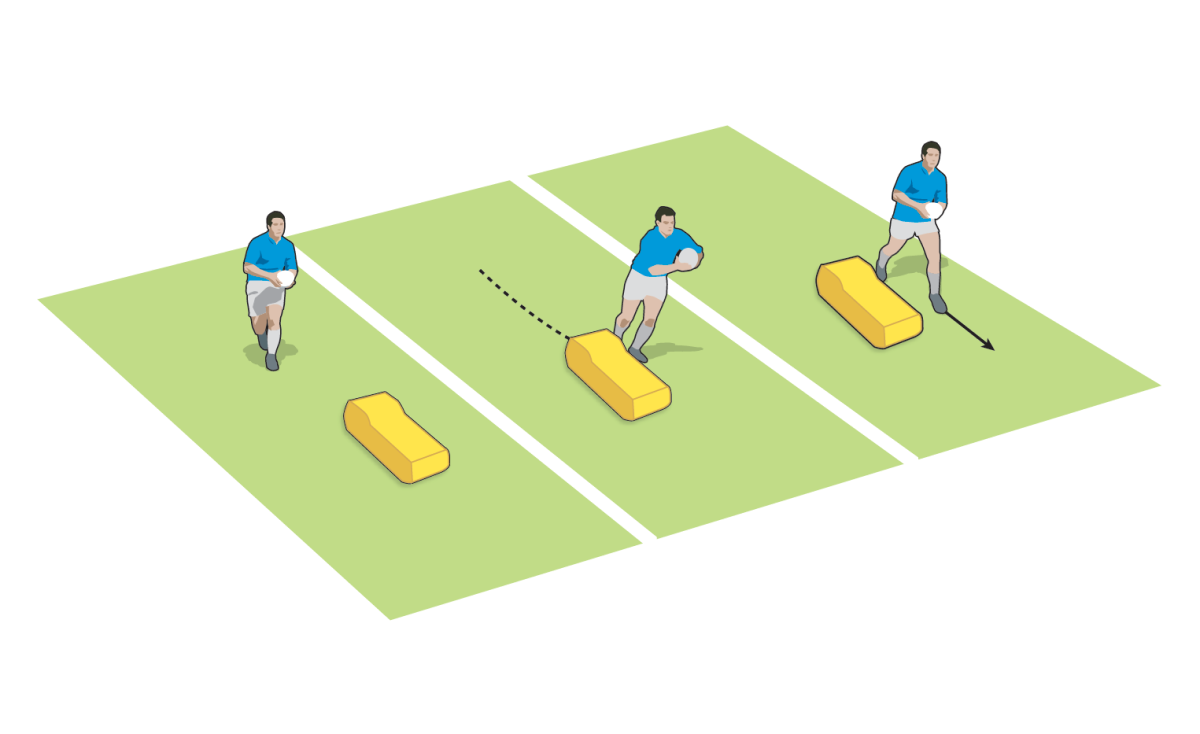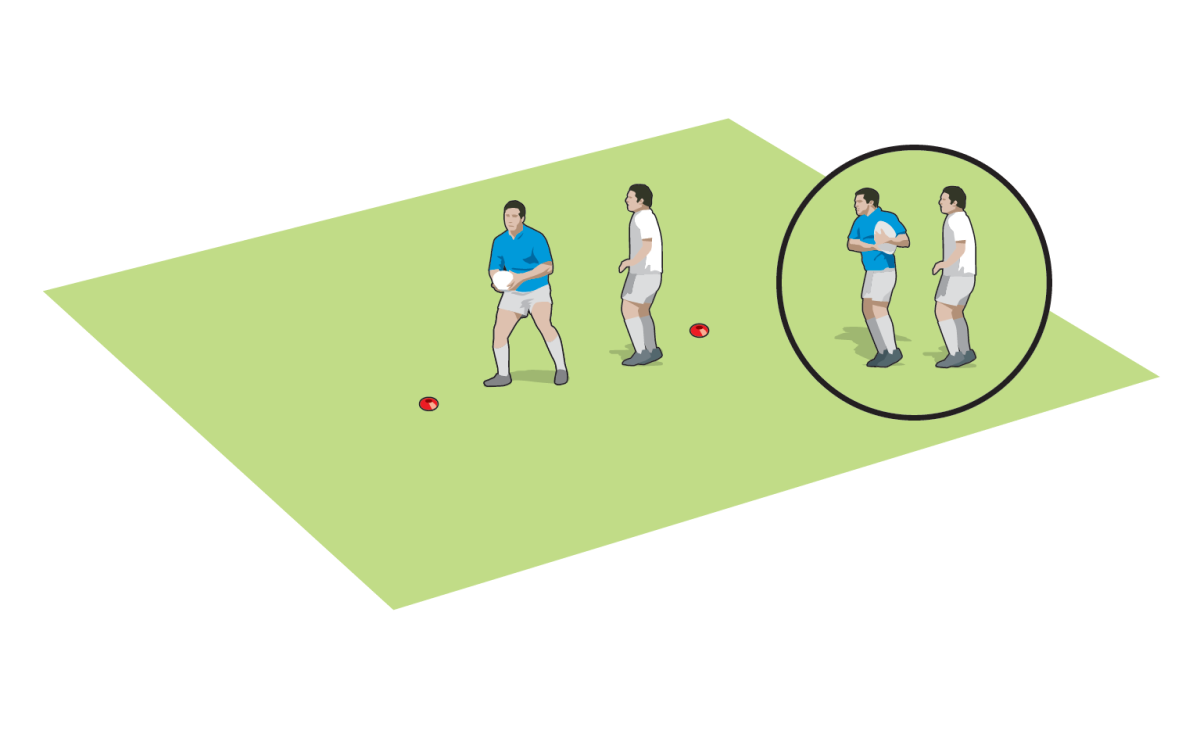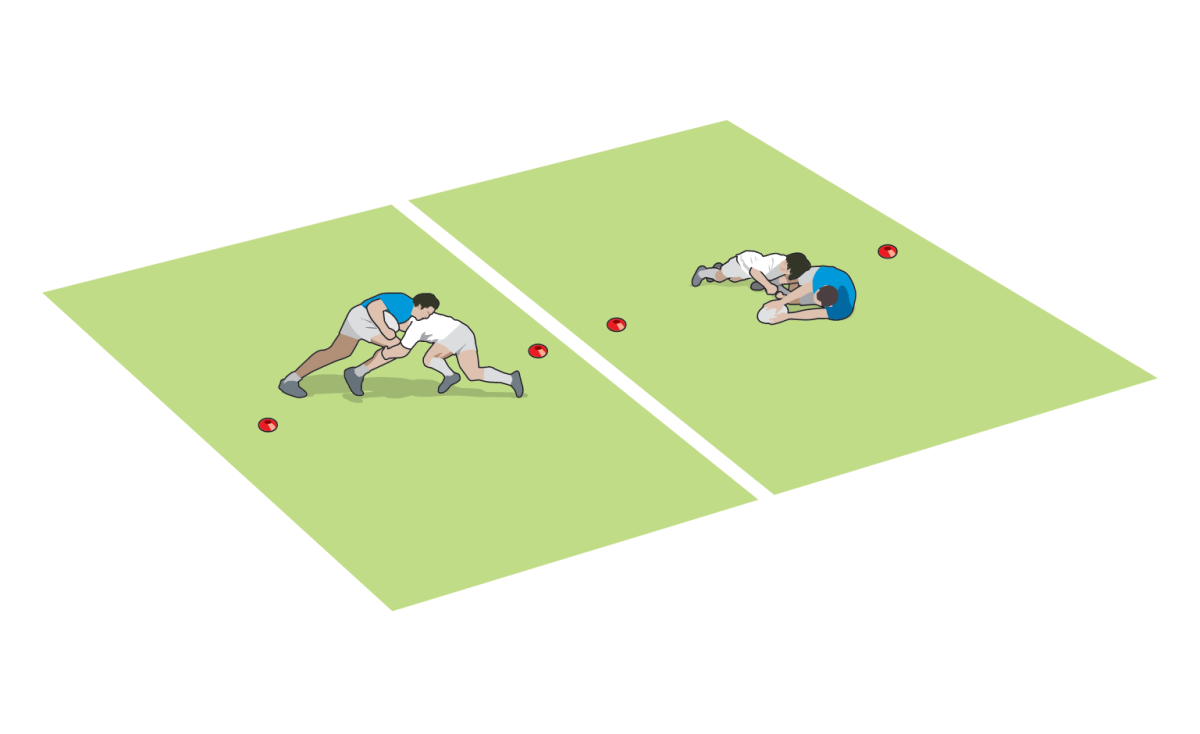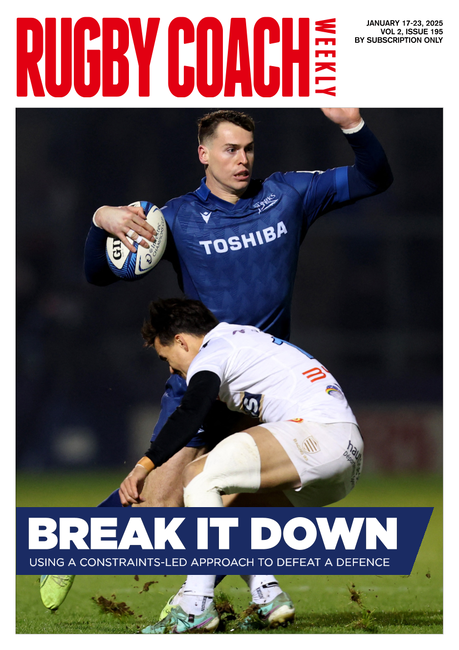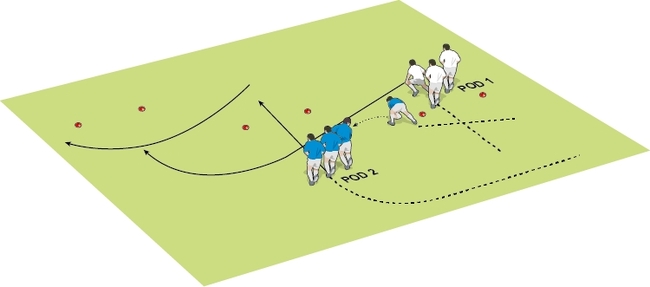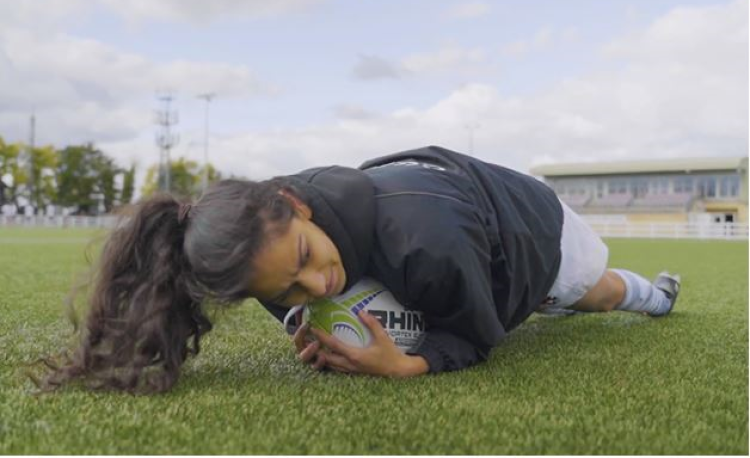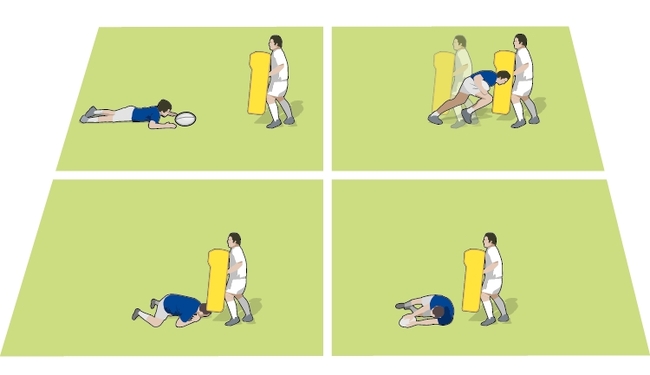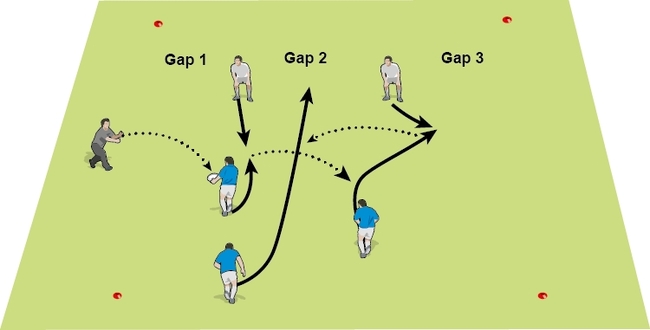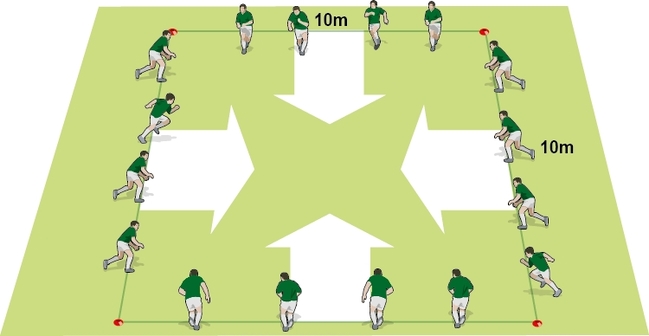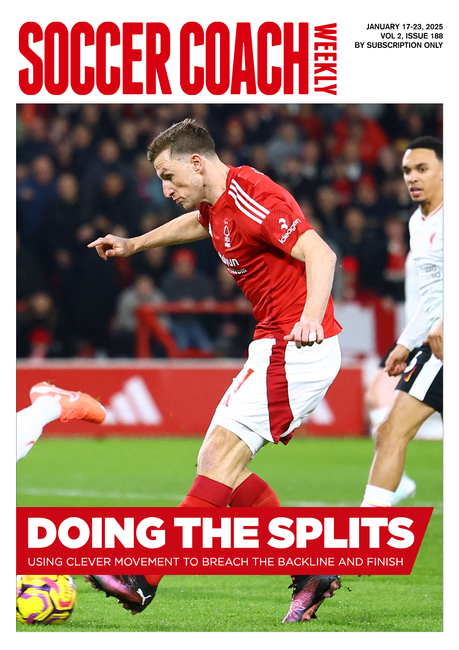Dominant ball carry
Ensure players use correct footwork to power through the contact area and then manipulate the ball so they can offload or present it cleanly.
WHY USE IT
Though power and aggression are important in the contact area, the ball carrier also needs to be technically accurate to ensure good continuity.
set up
A ruck pad and ball per pair of players.
HOW TO PLAY
ACTIVITY 1 - Footwork
A ball carrier attacks a ruck pad on the ground and then steps to the side. Ensure that the inside foot is next to the start of the ruck pad. The ball carrier starts with the ball in two hands and transfers it to one hand when at the side, before going back to two hands.
ACTIVITY 2 - 1v1 fighting to present
The ball carrier starts side-on to the tackler. They turn and fight to get through contact, finishing with a quality ball placement. Develop by starting the ball carrier with their back to the defender. They have to work harder now to get square.
DEVELOPMENT
Add an attacker who takes a pop ball. Instead, put a defender to the side of the attacker, with the attacker facing another defender. The attacker now has to get past the defender, placing so the next defenders have trouble getting the ball.
COACHING POINTS
- Step hard to the side of the tackle, trying to get the hips beyond the tackle.
- Drive through the contact area.
- Keep square for as long as possible to enhance the drive.
- The ball carrier attacks the pad...
- ...then steps to one side, with the inside foot next to the pad initially, before driving off
- They need to keep the ball away from contact, and can even put the inside arm out ready to fend
Related Files
- The ball carrier starts with their shoulder facing the defender
- Develop by having the attacker facing away
- The ball carrier turns and aims to get over the cone
- After the tackle, check for good presentation skills
Newsletter Sign Up
Coaches Testimonials

Gerald Kearney, Downtown Las Vegas Soccer Club

Paul Butler, Florida, USA

Rick Shields, Springboro, USA

Tony Green, Pierrefonds Titans, Quebec, Canada
Subscribe Today
Be a more effective, more successful rugby coach
In a recent survey 89% of subscribers said Rugby Coach Weekly makes them more confident, 91% said Rugby Coach Weekly makes them a more effective coach and 93% said Rugby Coach Weekly makes them more inspired.
Get Weekly Inspiration
All the latest techniques and approaches
Rugby Coach Weekly offers proven and easy to use rugby drills, coaching sessions, practice plans, small-sided games, warm-ups, training tips and advice.
We've been at the cutting edge of rugby coaching since we launched in 2005, creating resources for the grassroots youth coach, following best practice from around the world and insights from the professional game.
